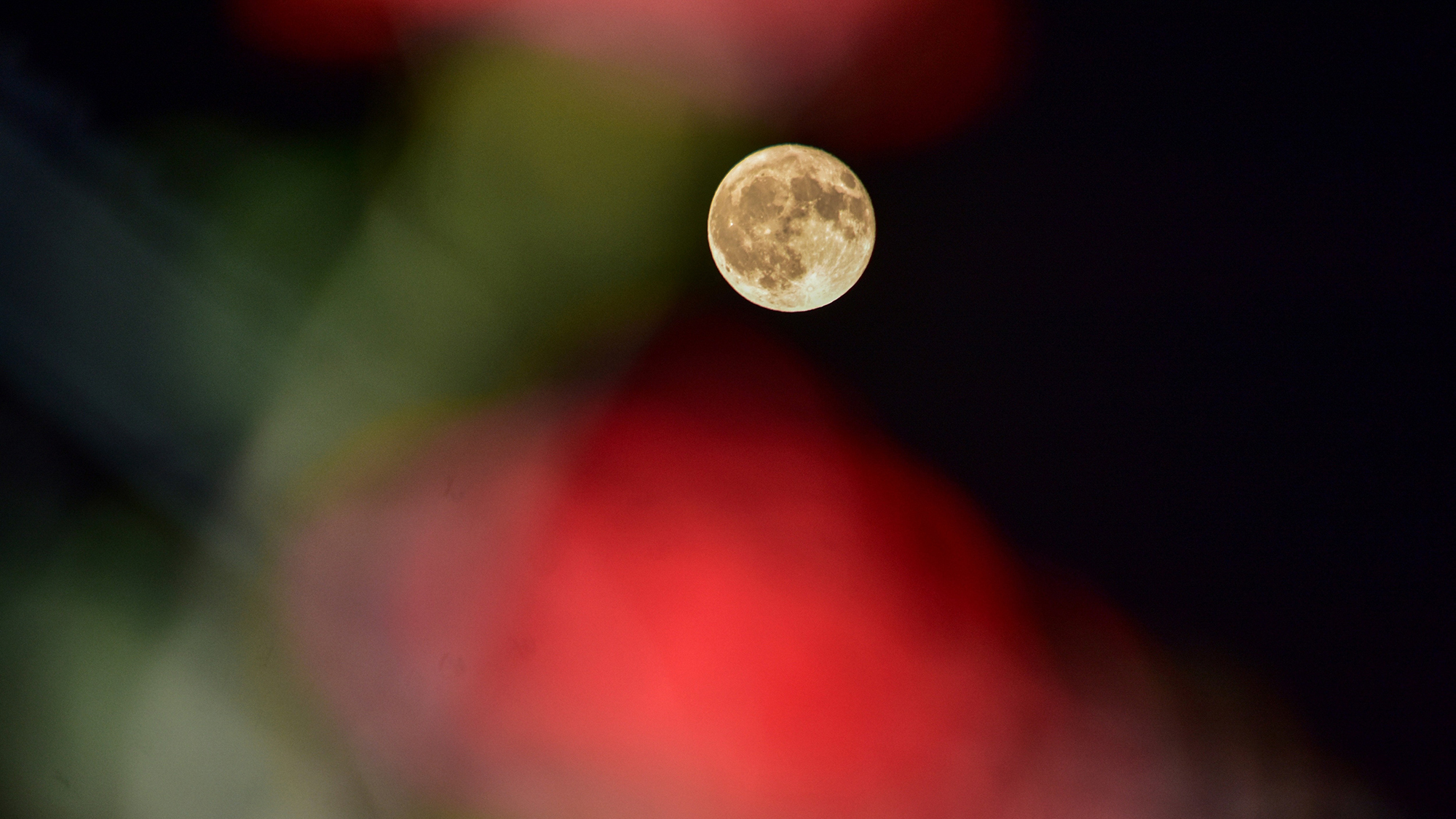

| June 1 | Crescent Moon and Mars |
| June 5 | Globular Cluster Messier 10 Well Placed |
| June 20 | Summer Solstice |
| June 20 and 21 | Full Strawberry/Solstice Moon |
| June 27 | Bootid Meteor Shower Predicted Peak |
For those of us in the Northern Hemisphere, we are enjoying the longest daylight hours of the year ahead of the summer solstice. Summer stargazing season is quickly approaching, and this month we have a unique full solstice moon this month as well as a chance to spot some meteors. Here’s what you can look forward to this month as we head into the hazy days of summer.
June 1–Crescent Moon and Mars
If you are willing to be up and outside by 4:30 a.m., you may catch a glimpse of Mars and Saturn with a crescent moon between the two planets. Mars and the moon will both be at a bright magnitude. For best visibility, look to the eastern sky just before the sunrises.
June 5–Globular Cluster Messier 10 Well Placed
A sparkly globular cluster Messier 10 will reach its highest point in the sky around midnight local time on June 5. This conglomeration of stars is about 15,000 light-years away from Earth in the constellation Ophiuchus. While not visible with the naked eye, it should be visible with binoculars or a telescope. Depending upon where you are, you should look towards the southeastern horizon as dusk fades, according to In the Sky. After June 5, it will reach its highest point about four minutes earlier each day as the month progresses.
[Related: How the Hubble telescope is keeping a 265-year-old stargazing project alive.]
June 20–Summer Solstice
Summer officially begins in the Northern Hemisphere at 4:51 p.m. EDT June 20. At the summer solstice, the sun travels along its northernmost path in the sky. At the solstice, Earth’s North Pole is at its maximum tilt of roughly 23.5 degrees towards the sun. It is also the longest day of the year, and you can expect roughly 16 hours of daylight on June 20 in some spots in the Northeastern United States.
In the Southern Hemisphere, June 20 will mark the beginning of winter.
June 20 and 21–Full Strawberry/Solstice Moon
June’s full moon will reach its peak illumination on June 21 at 9:08 p.m. EST. It is best viewed just after the sun sets towards the southeastern sky. June’s full moon is typically the last full moon of the spring or the first of the summer.
This year it is considered a solstice moon since it occurs so close to the summer solstice. The moon will be about 10 widths lower on the horizon than the sun. Just after midnight on the 21st, the moon should be at its lowest point in the horizon for the next 18 years.
The term Strawberry Moon is a reference to the ripening of “June-bearing” strawberries that are ready to be picked and eaten. For thousands of years, the Algonquian, Ojibwe, Dakota, and Lakota peoples used this term to describe a time of great abundance. Some tribal nations in the northeastern US, including the Wampanoag nation, celebrate Strawberry Thanksgiving to show appreciation for the spring and summer’s first fruits.
Other names for June’s full moon include the Flowering Moon or Waawano-giizis in Anishinaabemowin (Ojibwe) and the Summer Moon or Yáikneh in Seneca.
[Related: Watch a meteor’s incredible light show above Spain and Portugal.]
June 27–Bootid Meteor Shower Predicted Peak
This month’s Bootid meteor shower should begin on June 22. It is expected to reach its peak rate of meteors around 9 p.m. EDT around June 27. The Bootid meteors should be visible when the constellation Bootes is just above the horizon. The Bootid meteor shower was created by the comet 7P/Pons-Winnecke and expected to last until July 2.
The planet parade hype
By now, you’ve also probably heard about a possible “planet parade” of six planets all lined up around June 2 and 3. While six planets will be in line, this particular arrangement is the same every year in the first week of June. They also won’t be clearly visible with the naked eye or even at all. From our view on Earth, Mercury and Jupiter will rise above the horizon, but will be blocked out by the sun’s glow. Mars and Saturn will be visible to the naked eye, but will be a little dim. Uranus and Neptune will only be visible with a telescope or good pair of binoculars.
The same skygazing rules that apply to pretty much all space-watching activities are key this month: Go to a dark spot away from the lights of a city or town and let the eyes adjust to the darkness for about a half an hour. Then, just sit back and let the summer skies dazzle.